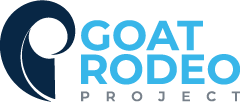The subject of AI and its impact on our organizations and our people dominates the conversations I have with business and HR leaders about the new world of work.
It’s not surprising that it’s front of mind when you consider the much publicized facts. A 2018 McKinsey report of Canadian executives identified that 87% of companies are going to increase their investment in AI over the next 3 years. The RBC report ‘Humans Wanted’ identified that 50% of jobs would be impacted by technology by 2028.
Despite this overwhelming evidence, I’d argue AI just stands for ‘another innovation’. I wasn’t around at the time, but I’m pretty sure the invention of the wheel, the light bulb, and the internet (I was around then!) created a seismic level of disruption in the workplace. Is AI really any different?
Many would quite rightly argue that new technologies like AI are being created at an exponential rate. Does that mean rather than AI being just ‘another innovation’ it’s about AI being ‘accelerated innovation’? I’m also very aware that there are multiple disruptions happening at the same time making life even more complex (take a look at one of my favourite reports by The Brookfield Institute). So let’s call AI ‘adjacent innovation’ – or perhaps we can confuse everyone and create a new term – A3I ‘another, accelerated, adjacent innovation’?! Yea maybe not!
Rather than focusing on the language (or even worse creating new language!), let’s acknowledge that there is significant disruption that is much broader than the impact of Artificial Intelligence and start to take action.
But that’s one of those ‘easy say-hard to do’ things. Where do we start?
Act now
I’ve tried to stop using the term ‘future of work’. It creates a false sense of security that we have time or worse that we can wait for the next generation of leaders to take action. I don’t believe we have time. We need to act now. It’s reassuring that Mercer reported that 99% of organizations are ‘preparing for the future of work’, but is that enough? Preparing can be very different to doing!
Ask yourself these questions:
Do you understand how the 31 disruptors identified by The Brookfield Institute (as just one example) are impacting your people?
Have you identified and prioritized actions based on a thoughtful analysis of these disruptors?
Have you built agile change management strategies to support your leaders and people who are dealing with this change?
Build the right capabilities
A recent McKinsey article identified the need to develop a new set of leadership capabilities.
“What often separates the best leaders is their ability to be visionary and creative, not just vigilant and reactive. Rather than react to situations and manage what is, visionary leaders—ones who bring a broader awareness and ability to show up with a sense of humanity—focus on creating what is not, but what should be, in service of a greater purpose.”
As the article points out, the good news is that these creative leadership skills can be developed.
It’s time to take a new approach to leadership development to provide leaders with the capabilities to succeed in the new world of work. Experiential events that build self-awareness and broader environmental awareness are critical. Once you’ve developed these new skills, hold people accountable to the new expectations.
Some more questions:
How are you developing these new capabilities in your leaders?
What new approaches are you taking?
What strategies do you have to hold leaders accountable to these expectations?
Take a human approach
Somewhat ironically the volume of technology disruption amplifies the need to take a human approach. I am writing this article while sat in the lobby of one of the major banks. I look around. Yes, of course, some people are heads down interacting with their devices, but more people are interacting with each other. Meeting for lunch or heading out for a coffee. Strategizing before an important meeting or getting some guidance from a friend.
As technology advances through ‘another innovation’ our humanistic skills need to develop faster. People want meaningful work and a worker (dare I say human!) experience where they can make an emotional investment. Where they can be all in.
Do you have a clearly defined purpose that is embedded in your organization? Have you defined the characteristics of your culture that will ensure you evolve? Have you reviewed your worker experience?
So act now. Build capabilities. Take a human approach. Implementing these steps will help you leverage the great opportunities that come from AI (artificial intelligence) and the next AI (another innovation) and allows your organization and your people to thrive in the new world of work.

